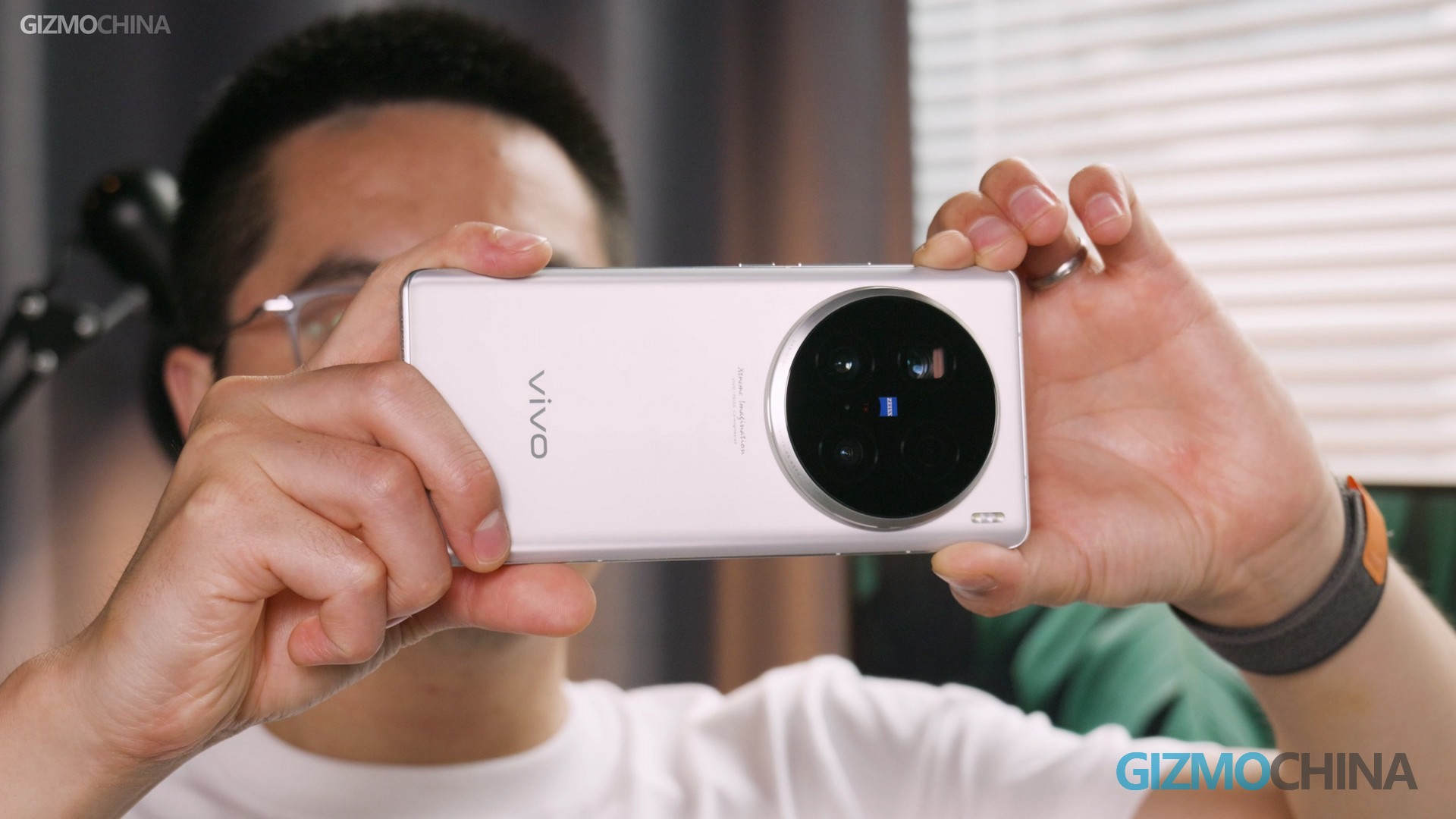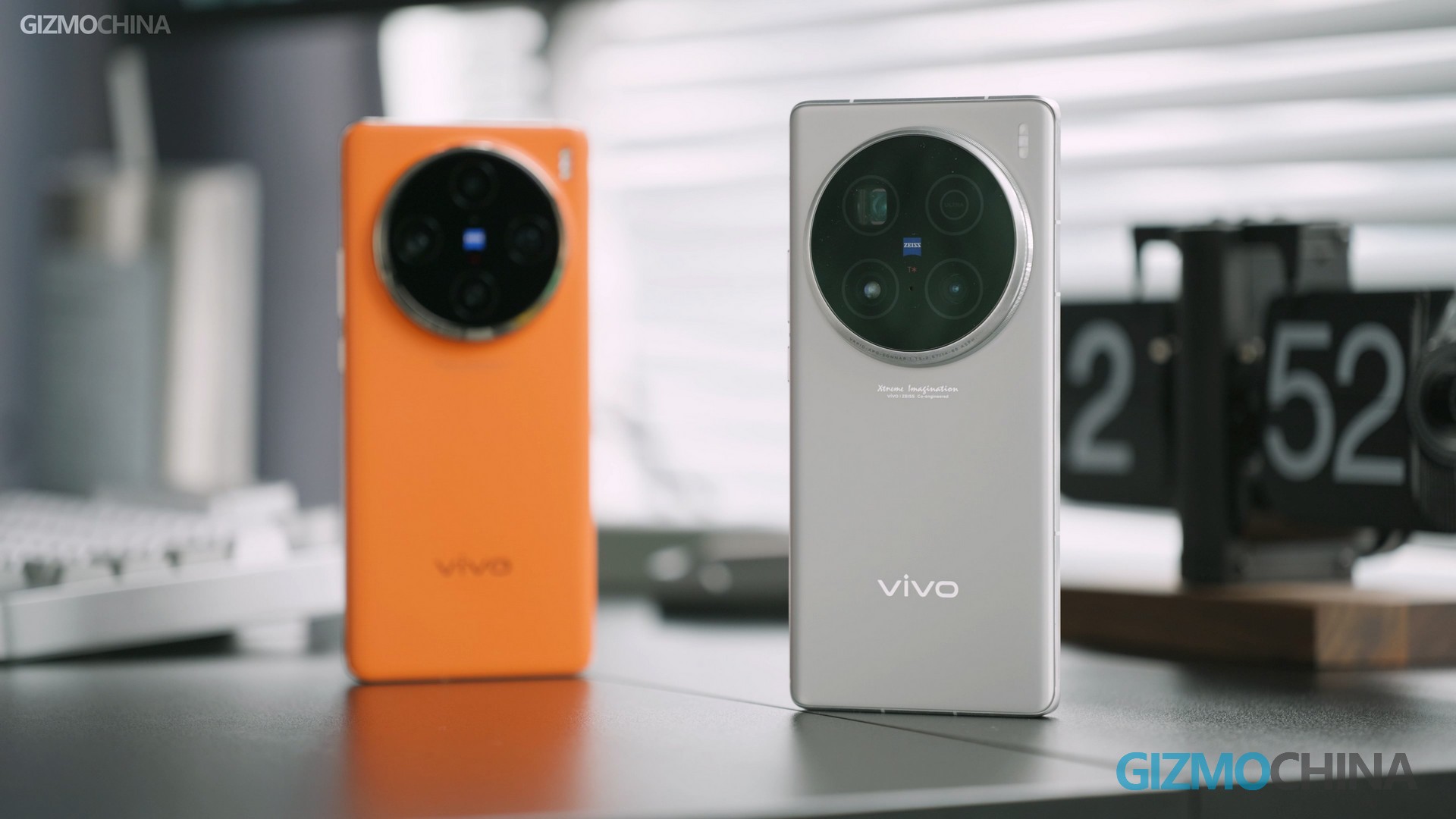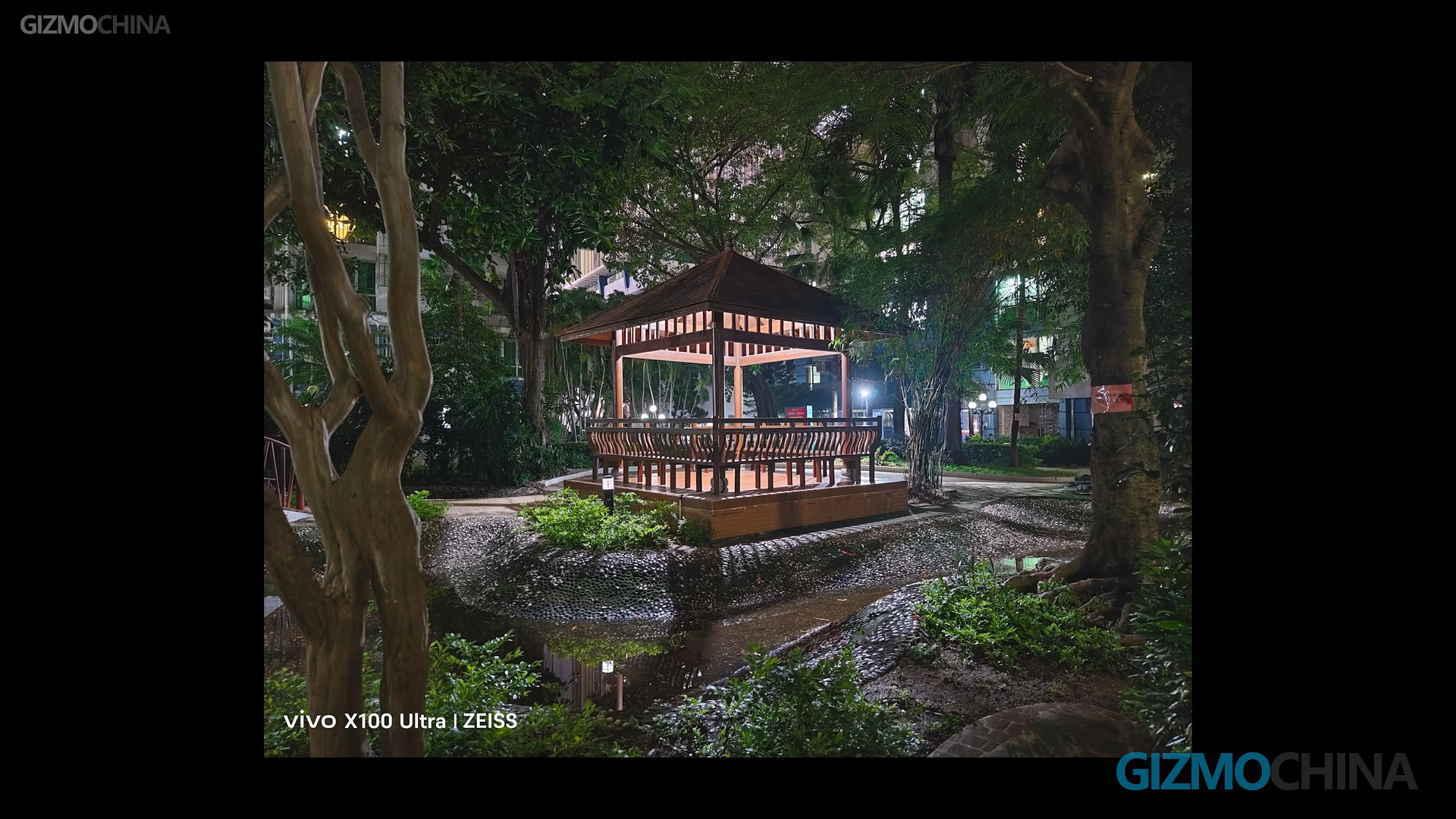The X100 Ultra, Vivo’s most powerful phone so far, also comes at the latest time among all flagship phone brands. In a few months, Snapdragon 8 Gen 4 will be released soon, and by then the phones with 8 Gen 3 will be outdated to some extent. What made Vivo so confident to do it this way? We tried and tested its power, especially the camera capacity. Now I’m sure that the phone is powerful enough to please almost everyone.
Here’s an enticing deal for tech enthusiasts: Get VIVO X100 Ultra at a special presale price of $100 off! Simply use the coupon code “GX100” to avail of this discount. This offer is only valid until May 29th, 2024.
Telephoto Camera
Like the Pro version, the X100 Ultra is housing triple lenses with different focal lengths, which is different from the four focal lengths used by Xiaomi and OPPO. What’s different from the Pro is that the sensors of the three cameras have various upgrades respectively. In particular, the telephoto camera is the best telephoto camera available on a phone and it is also the X100 Ultra’s main selling point.
Although the focal length has been shifted from 100mm to 85mm, it’s actually a good adjustment for this phone. Because the zoom between 23mm and 100mm on the Pro version is digitally cropped, the range is so wide that the drop in image quality is more noticeable. Now the X100 Ultra’s 85mm telephoto camera will fix that a bit.


So how great is this telephoto camera? The answer is superb, so good that I’m willing to give it the title of world’s best. 200MP HP9 with the In-sensor-zoom feature, plus Vivo’s AI algorithms will make you become a sniper without a problem. Can you believe this is a 600mm or 26x zoomed-in photo? You must know that it only has a 3.7x optical zoom (check it out in the review video).
The over-sharpening is also not very noticeable like before. As you can see, the pet’s fur is presented naturally. The sensor area is bigger, and you no longer need the main camera to crop the image when there is insufficient lighting at night.
All in all, I am very satisfied with this camera. But of course, nothing is perfect. For example, the unstable white balance issue is still there without been fixed. But other than that, it’s hard to pick any other flaws with this camera.
Macro mode
It’s no surprise that a telephoto camera can take macro photos, but what happens when the macro function catches up with the best telephoto phone camera in the world? It’s getting me addicted.
The ultra-high pixel count and large sensor bring high image quality like never before. I’ve never seen such great macro photos shot on a smartphone. It has driven me a lot to take a photo of any subject in macro mode that is close to me.
Take a look at this photo with two flies in it, can you see them? Let’s take a closer look at it in macro mode.

I apologize for interrupting their sweet time, but, hey, look at the image quality. You can even see the hairs on the legs. This is unbelievable! The other bug doesn’t seem to have found its mate yet, staying there thinking about its life. This is the X100 Ultra, a phone that can shoot insect documentaries.
The only thing I would complain about is the shallow depth of field, sometimes I don’t want to blur out the background, but there’s nothing I can do about it, this is physics after all. Fortunately, shallow depth of field is a good thing most of the time, so it’s not a big deal. Being both a telescope and a microscope, no one should disagree with me when I say it’s the world’s number one telephoto camera for smartphones now, right?
Color Mode
The X100 Ultra still has three color modes: Vivid is characterized by bright and vivid colors, Textured is characterized by low exposure, high contrast, and noticeable vignetting, and ZEISS Natural is closer to Vivid, but with lower contrast and a cooler white balance.
Each of the three modes has its own use scenario: if recording daily life, such as taking photos of food and portraits, the Vivid mode is the best.
If you want to create your own photography, or shoot neon lights at night, try using Textured mode. Because Vivid’s HDR effect is too strong, it doesn’t look as good as Textured mode’s.
When the first two modes don’t work well, it’s time for ZEISS Natural mode to take over, most of the time it takes decent photos easily. It actually has a fourth color mode tucked away somewhere else. What it is and where it is, we’ll show you later.
Main Camera
Let’s talk about the main camera. In terms of image quality, there is no significant difference between the main camera of the Ultra and the Pro. I mean the Pro’s main camera is already at the top of its game, the Ultra doesn’t surprise us much. Or maybe the telephoto cameras have surprised us so much that it seems like the main camera is less of an improvement.
Compared to taking photos, the main camera will be a bigger improvement in video recording. Instead of using the same physical variable aperture design as HUAWEI and Xiaomi, the X100 Ultra has added a gimbal-like anti-shake structure. So the stability of the footage will be improved a lot, and obviously, it’s much better than any other Android phone when recording at night.

All cameras can be switched in Dolby Vision mode at will, whether they’re recording or not, which is something other Android phones can’t do. The ultra wide-angle camera is a bit less competent than the other two cameras though. It’s the only one that can’t record 4K 120fps video specs. I also found a problem that I’m not sure if it’s a bug or not: its 4K 60fps preview is without EIS and looks very shaky. But when you go to the albums, you’ll see that the footage is actually very stable. It’s quite strange that I’ve never seen before.

Ultra-wide Camera
The ultra-wide camera is the most common of the three. Although the hardware has been upgraded, the improvement in image quality is not very significant. We won’t go into too much detail, but you’ll see how great it is when you look at the sample photos.
Portraits
Portraits have always been a strength of Vivo’s phone. Skin tones are accurate and there are various beauty effects as well. The X100 Ultra’s selfie camera has been enhanced quite a lot. In addition to having autofocus, there’s also 4K 60fps video recording. This should be good news for Vloggers.
AI is also used in portrait mode, such as the AI Visual feature. It converts your portraits to be like you took them in four different seasons. Though you can find out it doesn’t convert perfectly by zooming in. We use it for fun anyway, so don’t take it too seriously.
Camera experience
Vivo has also put a lot of effort into the camera experience this time. For example, it puts several commonly-used focal lengths in the same button. Sometimes it’s hard to use the dial to adjust to the focal length I want, and it’s really easier and faster to tap to switch.
Another example is that to emphasize the X100 Ultra’s status as a photography flagship, Vivo has designed a new mode for it: the Humanistic Street Photography Camera Mode. Simply put, it’s another Pro mode, but more retro.
In this mode, you can easily adjust various parameters and use various presets. It also has the DISP mode of the Pro cameras, it even allows you to customize the style of the shutter button. There’s a new color mode here, black and white mode. Just like the name says, it enables you to take black-and-white photos. I don’t know why ultra-wide cameras aren’t allowed to use this mode, which really confuses me.
One interesting point is that the default color style for this mode is Textured and HDR is off by default. It’s clear that Vivo wanted this modern and powerful camera phone to turn into a retro camera, making it possible to take highly stylized photos. If you buy that camera grip, then this is the most powerful “old camera” ever.
Here’s an old problem that hasn’t been fixed yet. I really wish Vivo would let me choose the metering preference. Every time the X100 Ultra detects a face, it raises exposure, which sometimes makes me so mad.


Display
The display upgrade on the X100 Ultra is not huge. Although the resolution has been improved, the panel has been replaced with Samsung’s E7 material. Peak brightness hasn’t improved though, and the PWM dimming has gone from 2160Hz on the Pro version to 1440Hz. viewing angles have gotten worse too.

Actually, I can live with all these, what I can’t live with is the fact that its screen form factor is still the same as it was a few years ago. You know, a lot of phones these days have straight screens or curved screens with four equal-width bezels. They’re all very pretty and functional. The X100 Ultra just looks very outdated in front of them. Vivo didn’t put much thought into the screen.


Performance
Similarly, since Qualcomm hasn’t released Snapdragon 8 Gen 4 yet, the X100 Ultra’s processor has to be Snapdragon 8 Gen 3. Just… We’ve tested thousands of 8 Gen 3 phones now, and the X100 Ultra just isn’t anything special. It’s good, and it’s in line with the performance we’d expect from a photography flagship phone. After all, you wouldn’t expect this kind of phone to still have a very aggressive strategy over performance, right?


Design, Battery & Charging
The X100 Ultra keeps the design of the X100 family. There aren’t too many noticeable changes other than the camera module being bigger once again. There’s only one thing I can say about the X100 Ultra’s design: what’s going on with the fake camera? Putting the Zeiss logo here would look better to me.


There are only three colorways for the Ultra version, and all of them are much more subtle than the Pro version. Especially the Titanium color we have here, the glass back looks metallic and is my favorite of the three colorways. Otherwise you can actually still think of it as the X100 Pro with satellite communication.

The weight is slightly increased but acceptable. The bad news is that: the charging power is lower, both wired and wireless. And that wireless charging coil has moved down because the camera module is too big, so not all wireless charging docks fit it well. The good news is that the semi-solid state battery gives the X100 Ultra a little more battery capacity, and it won’t shut down automatically and should perform well in cold conditions. And the high-power PPS charging is still here, with great charging compatibility.


All in all, most of the X100 Ultra’s features are similar to the Pro version, which is great, but nothing more.
Summarize
The Vivo X100 Ultra is a good phone, but not good enough. It has one of the top camera systems in the world, but unfortunately, it was released too late. Since this year’s Snapdragon 8 Gen 4’s will be released earlier than last year’s 8 Gen 3’s, right away you’ll be able to buy an 8 Gen 4 phone.
I don’t know how many more people will buy an 8 Gen 3 phone for that camera at that time. But if you just don’t care what happens in the future, you just want a phone that takes the best pictures right now, then the X100 Ultra does give you what you want.






































